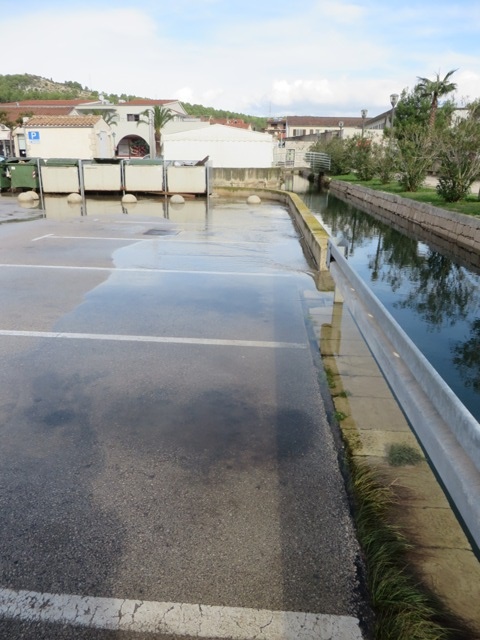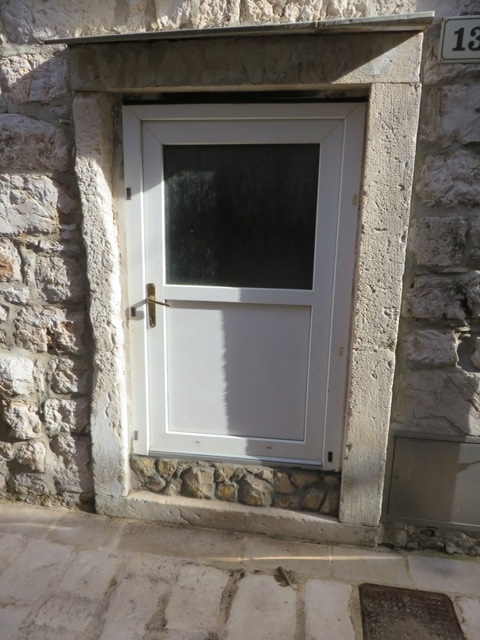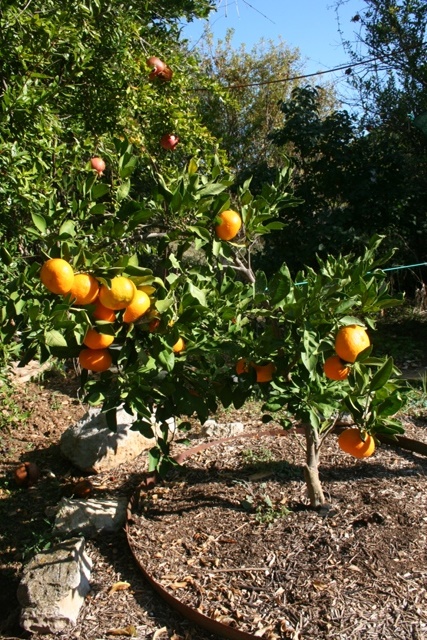Winter preparations
This week: Flooding; Winter preparations; Lighting the woodstove;

Nowhere is immune from severe weather. This week there has been almost no sun, instead, fairly continuous rain with occasional heavy bursts. In the central Mediterranean the was Medicane Detlef. This Mediterranean hurricane made landfall in Algeria on Monday and in the Adriatic severe storms led to a Tornado warning.
In Dol, my rain gauge has registered 132mm and it has been windy, but coming from the south it is mild, 18ºC. Just the sort of weather for inside jobs…
Flooding
Not the rain, but the same high tide and wind driven storm surge that inundated Venice, also inundated Stari Grad on Wednesday.
It was only last week that I wrote about seeing the tide coming over the harbour wall in the town.
On Tuesday afternoon I came out of the supermarket to see the car park flooded as the sea swept across the road.

The sea water was slowly rising up the wheels on my car. Fortunately almost as quickly as it rose, the water started to rush back out over the harbour wall. It looked like a weir.

Very fortunately, the sea water never got as far as the wheel rims on the car. But I still waited for the sea to retreat completely before moving. Then I took to the back streets so I wouldn’t have to drive through any salty water. Unlike some motorists who just ploughed through spraying salt water everywhere. It’s another reason why cars here are in such poor condition.
But the worst was to come. The Adriatic is a fairly shallow sea. It is also a cul-de-sac. At the very top, as you look at the map, is Venice and Trieste.

But that means that just like Stari Grad, but on a huge scale, water coming up the sea from the south has nowhere to go.

Stari Grad was flooded for most of Wednesday morning. The sea came over the wall with the high tide at 07:00. Only unlike the day before, it didn’t retreat and the streets and lanes were still flooded at lunchtime.
On this Google Earth photo, almost all the streets shown were flooded. The numbers indicate the location of my photos.

After lunch my neighbour told me that in the local newspaper, the discussion is about how long before the town will have to be abandoned because it is so close to sea level.
The buildings in the oldest part of town are so close to the sea and services are already below sea level, there is little that can be done to protect them.

Just having to put oplata žuta shuttering in front of your door every high tide is not a sustainable solution. These houses are 100 meters back from the harbour on Ulika Bartola Kašića.

The black marks on the walls tell the story of rising waters.

Cutting the bottom off your door and raising the step is a radical, if short lived solution!

When the sea floods, access by road becomes difficult to impossible.

The old part of the town is barely above sea level.

Stari Grad is one small town (entire district population 2,700), in a small country at the extreme south eastern corner of Europe.
Multiply this by even the rest of the Mediterranean and the problem of climate induced sea level rise and weather changes is immense.
As I write this, much of eastern and mid-west America is in a frigid air flow that usually only happens in January.
In parts of Australia bush fires rage and in the rest of the world climatic changes are just not getting reported.
Winter preparations
I’ve been putting the winter protection netting round my citrus trees this week.
I had the idea last year to create a permanent framework around the citrus to protect them from the cold winter Bura winds. Onto this frame I hung shade netting, which I took down in the spring and packed way. The frames are permanent and as the trees grow, will define their eventual shape and size.
The sun now barely climbs above the hill behind the orchard, so it illuminates less than a quarter of the orchard, even at mid-day. The winter solstice is almost here.

It took a day to refix the netting onto the frames. I had to cut back some established trees which have overgrown the frames. One of these is a Pomegranate.
The Pomegranate fruit is nice and healthy and the trees have bright flowers in the spring and autumn foliage colours, but are really messy.

They sprout multiple suckers from the bowl of the tree and from their extending roots. They are very thirsty trees, depleting the water in the soil for a large area around the tree and the wood is weak.

That coupled with the weight of the large fruit means that branches droop and break easily.
They are a high maintenance tree and I think that one in particular which is up against the cottage wall probably needs to come out.

I have another three and would replace it with a Jujube, Ziziphus jujube, that also fruits. I’ll make a decision in the winter. I have a Ziziphus in a pot waiting to be planted.
I have been picking the Mandarins on the trees before I protected them. Citrus are unusual in that you can have blossom (even in winter), developing fruit and ripe fruit on trees all at the same time.

Getting ready to light the Woodstove
My winter heating is provided by a wood stove. Solid fuel heating needs maintenance though. So this week I took the roding eye off the chimney and gave it a scrape out. I also tested the extractor fan which proved so beneficial last winter. The fan powered up straight away.
Next on the list of jobs is the UPS which powers the central heating pump when the mains power fails, as it does regularly.
Looking back at my records, I lit the fire for the first time last winter on 12th December 2018. The last time was in mid February this year, so it is actually only a two month central heating season.
My wood shed is full with around 5 cubic meters of wood, most of which needs cutting. I also have a large pile under plastic outside, which I will try and use first.
When I looked at the temperatures, it was when the maximum daily temperature was below 10ºC that I needed heating. As at the moment the average temperature is still around the 17ºC mark, we are still a way off.
This week’s weather is coming from the south, the Jugo wind, which is a warm, wet wind. It is only as the wind swings north and we get the cold air that comes off the cold central European plains, that I need my heating on.

There is something comforting about a real fire in the corner of the room, heating the house, with a log crackling away in the grate. NRC
One Response
Ray LaShier
Norman,
Know that you have mentioned it before, what kind of wood stove are you using? It looks like I could use it to heat my enclosed porch. That is should it be available in the states.